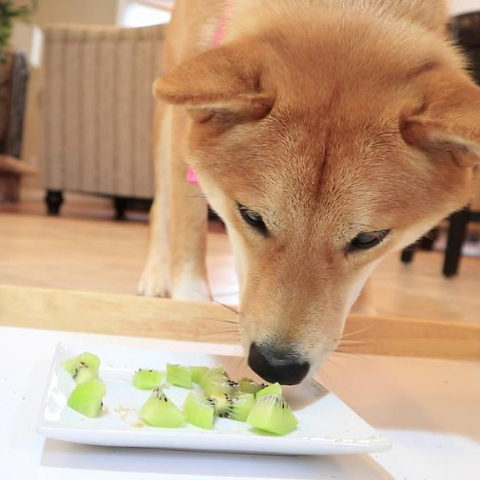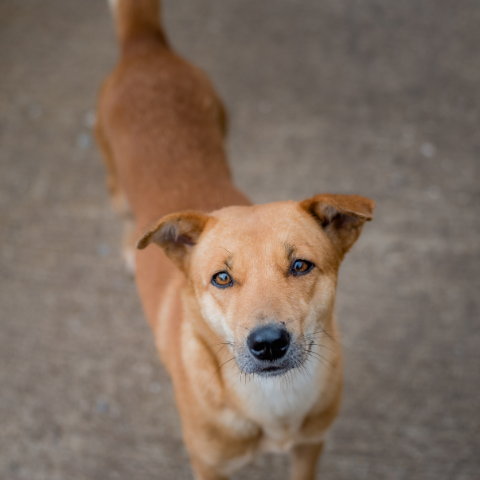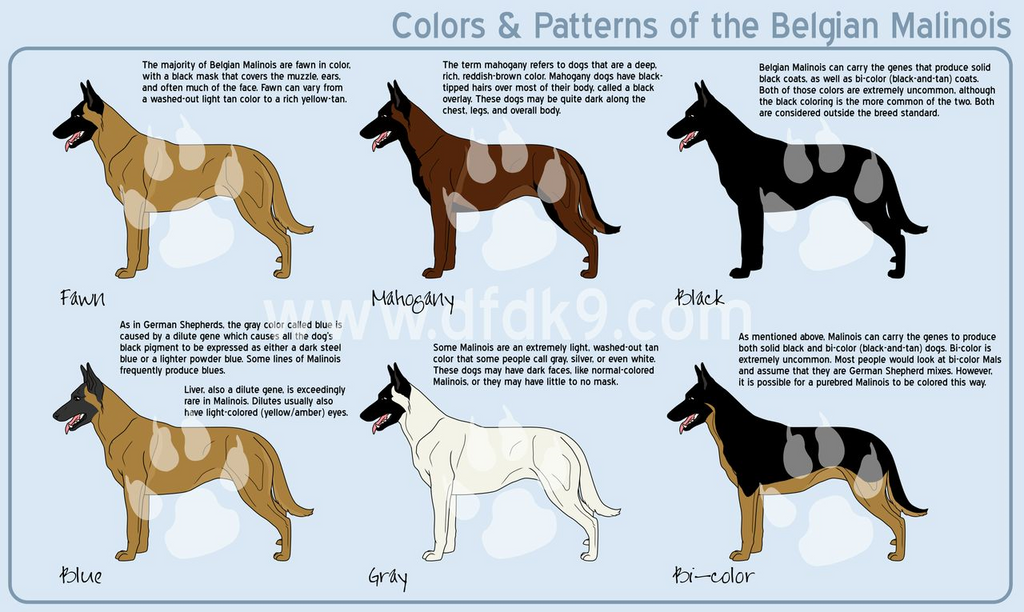Can Dogs Eat Bananas?
Bananas are not the best food for dogs, but you don't want your dog to starve to death, so you have to find another alternative. Dogs can eat bananas, but not at the same level as dogs eat their usual foods. Dogs can eat regular bananas in moderation, or the form of juice. Eating too many bananas could cause pups to get constipated. And because banana is a high sugar fruit, bananas should only be fed to a dog once a week as an occasional treat.
To make up for a low-quality diet and an unappetizing diet here is a healthy and suitable diet for dogs. The most crucial thing in your dog's diet is raw vegetables. If your dog has a problem with digestive problems, they need lots of raw vegetable intake, including beans, carrots, squash, spinach, turnips, cauliflower, parsnips, celery, and potatoes. You should add these vegetables to your dog's daily food every day, preferably raw. You can cook these raw vegetables or give them to your vet as a special treat. To increase more fiber in your dog's diet, you should feed him more of this. Some people like to feed their dog frozen vegetables, but frozen vegetables don't contain all your dog's nutrients.
To make up for the low quality of your dog's diet, it is good to supplement with other types of food. Some people add protein to their dogs' diet, but it is also healthy to include lean meats such as chicken and fish. It is essential to keep your dog's diet balanced and do it slowly. If you add too many protein-rich products to your dog's diet simultaneously, he could end up with kidney problems. To avoid kidney problems, take your dog out every three to four weeks for a thorough check-up to make sure he's healthy. You can also bring your pet dog to the veterinarian to get checked on his weight and health conditions.

Can dogs eat blueberries?
Is blueberry healthy for dogs? What health benefits does this tasty fruit have? Yes, they can. Blueberry is rich fruit with vitamin k, vitamin c, antioxidants, fiber, and other nutrients in quite a high amount, allowing it to improve your dog's overall health significantly. It also strengthens the immune system and brightens your dog's coat and skin, preventing your dog from different fatal illnesses. The most common problem with dogs with too little fiber is that they tend to gain weight, which may lead them to many severe diseases and even death.
But can dogs eat blueberries in moderation? Yes, as long as you ensure that this fruit dose is not more than one teaspoon per pound per day. Remember, too much intake of any fruit or food can be harmful to your dog, so only give your pet what they need. It is essential to ensure that the dog is eating the right kind of diet regularly.
How do dogs eat this delicious fruit? Your dog cannot digest blueberries, and therefore it must be chewed gently on. You can also feed your dog 2 to 3 fresh blueberries every day. Do not forget to include Watermelon! Watermelon helps your dog's immune system by boosting its immune function and helps regulate the body's pH levels. You can also feed Watermelon, it is an excellent source of vitamin C. If you want to feed your dog a more traditional form of food, you can add some dried blueberries to the table.

Can dogs eat tomatoes?
Yes, in moderation. And no, it doesn't matter what type of food your dog has. It depends purely on what your dog needs for its diet. If your dog eats green or ripe tomatoes, then it's dangerous. Those green parts contain concentrated tomatine, which is extremely toxic, especially for dogs suffering from gastric ulcers. A dog can also suffer everything from muscle weakness to gastrointestinal effects, seizures, tremors, vomiting, convulsions, and diarrhea.
If a dog has a problem with gastric ulcers or is diabetic, eating tomato will also cause serious complications. The acidic content in the tomato will damage their pancreatic duct. This can cause blood sugar levels to fall into the dangerous range, leading to seizures, kidney failure, or death. If a dog does get a stomach acid reflux, it will only become worse with time. In extreme cases, a dog can even pass away from the condition, if untreated.
Dogs can eat a tomato, but you have to know where to find the good ones. You have to find those canned varieties, as well as those with no additives. Tomato paste may taste good, but it's hazardous for your dog. So, if you're feeding your dog tomato, make sure that it is canned, not fresh. If you absolutely must give them a few tomatoes, then use organic tomatoes. If you think your dog is at risk or is doubtful about it, you should visit your vet.

Can dogs eat cheese?
Of course, they do. Most dogs will eat the cheese on their bread as well as in other foods. But what about if you are trying to make a treat for your pet? If you decide to use cheese as your food, then there are a few things you need to know first. Here are some tips for you to put in use when choosing the right food for your pet.
The main thing you will need to know about your dog's diet is the kind of stomach the dog has. A dog who eats many commercial foods may have issues digesting the food and has the stomach to be sensitive to the ingredients. It is best to choose a cheese that your dog doesn't have an allergy to or tolerate. If you know, you will have this dog in the house, more than a piece of cheese may not be something you should add. Also, the consistency of the cheese is essential. A firm cheese will cause your pet to vomit, which can cause severe stomach problems. This is why it is a good idea to choose a small and soft cheese if you know you will have this animal for a long time.
Another thing you need to know when it comes to cheese for dogs is the portion sizes. A larger piece of cheese will mean a more massive chunk of food for your pet. If you are trying to feed your pet a small amount of food each day, this may be fine. But if you provide your dog with several small pieces of cheese, it can cause choking and vomiting problems. Your dog may not want one cheese piece and eat another one after it and thus cause you to get sick from the extra cheese. So it is best to find a good dog food that will have enough portions so you can still enjoy an excellent cheese dish for the family.

Can dogs eat mango?
Yes, mangoes are good for dogs! Mango is safe for your pet to eat because of its healthy variety of vitamins. They're also one of the most nutritious fruit choices, mainly because of their rich assortment of essential fatty acids. Before serving your pet a sweet treat with mango, always clean off the fruit of any chemicals or pesticides and then separate the skin from the pit and other exposed parts.
If your vet tells you to stay away from mangoes, you might be surprised to know that mangoes and dogs are perfectly healthy companions together. Mango is known as a "superfood" because of all the vitamins, minerals, antioxidants, amino acids, fiber, and essential fatty acids found in mango. It's a great source of potassium and calcium, too. Potassium is a significant component of dogs' diets, and the calcium in mango helps build bone density.
Mango also helps strengthen your dog's digestive system. The enzymes and fibers to help to speed up the digestive process. This means that your dog will actually not feel bloated after eating mango. Because it is a natural diuretic, it reduces water retention. It is also big in protein, which your pet will need if he eats raw or cooked. And since mango contains bromelain, a good antiseptic that kills bacteria, it's good for your pet's dental health and also helps him avoid gum disease.

Can dogs eat corn?
While some breeds love corn more than others, it would be fair to say that almost any dog breed can eat corn. Corn isn't just filler - it's a great source of proteins, carbohydrates, fats, fibers, vitamins, antioxidants, and omega-3 fatty acids. Dogs love all sorts of meat that contain these nutrients, but it's just as easy for them to eat corn. If you're looking to share some popcorn with your pet, try to do that with a corn bag instead of a bag full of other things.
Corn has all kinds of vitamins, minerals, and enzymes that help dogs maintain their health and function better in their intestines. Dogs like to snack on crunchy food, but corn is just perfect for their digestive system. It has a good amount of protein, which makes it ideal for helping build muscles. Dogs love corn on the cob. Dogs love popcorn too! So if you want to share popcorn with your dog regularly, go ahead and do that. Just make sure that the popcorn you're feeding your dog isn't filled with excessive oil, salt, or other preservatives.
Dogs have a taste for corn. Dogs crave corn, so don't ever feed them canned corn. Corn chips should be avoided because they contain artificial preservatives and additives. In other words, you need to stay away from canned corn and stick to fresh corn. If your dog wants corn, give him some. However, the best type to give your dog would be raw corn. Raw corn contains all kinds of nutrients that help dogs stay healthy and fight disease, including enzymes that help break down plaque and bacteria that lead to cavities.

Can dogs eat grass?
Or that they only eat grass if they have a particular type of disease? Many breeds tend to eat grass when they have stomach problems, such as diarrhea or vomiting. It is also possible that the dog may not be able to eat any other type of food at that time, and they may just have to eat grass. If your dog is eating grass regularly, but you are not sure what he is doing, your dog may have ingested something that will give him an upset stomach after eating the grass.
Dogs also eat grass if their skin is infected or hurt. If a dog is injured and not able to eat much, they may eat grass to help heal their wounds. Some dogs have special needs, and their owners will have to find out the reason for their dog's eating habits and take appropriate steps to help them heal properly.
Dog owners must always keep an eye on their dogs when they are playing outside. Many dogs play outdoors, and they may be walking down a path near a fence and find a patch of grass and follow it there. This could mean that their dogs have eaten grass sprouted up somewhere close to where they walk. Some dogs will chew on bushes and trees just before swallowing grass. If your dog is chewing on anything that he can get into, he is likely trying to chow down on something that will kill him.

Can Dogs Eat Kiwi?
Kiwi is an excellent addition to your canine's recall training regimen. Yes, of course, if he likes the food, of course. Dogs need a little bit of fruit regularly, and even just a small portion of fresh fruit should be enough for them to keep up their health. They should only eat as much fruit as they need for their own good. But you want to ensure that the fruits you give your dog are ripe and not rotten or anything else that will kill them.
There are so many different types of Kiwi that you can get in the grocery store. You must always refer to the label and be able to see precisely what you are getting. Also, you can buy this food online as well. Ensure you check out the company you are buying from because some of them will try to make a lot of money for their food. It is always better to get your dog the best possible food for his needs. Search for a company that has been around for a while, and you can feel comfortable that you are giving your pet dog the best possible food.
Remember, you can't just give any kiwi to dogs and expect them to not like it. You have to ensure that you get a really ripe kiwi. You don't want it to be raw, or it could potentially cause digestive issues and other problems. Be sure that you check out everything you purchase before you buy it to make sure that you are getting your money's worth. After all, there are many different companies out there that you can choose from. So take your time, find a quality company, and get to work with your dog.

Can dogs eat papayas?
Well, you're not alone. Many people want to know if their dog can eat these little tropical fruits used for centuries to help with dogs' nutrition and general health. The truth of the matter is that pet dogs can eat many fruits but only certain ones. If you want to feed your dog some of these great fruits, you have to be careful and make sure they are not mixed with other foods or, even worse, given to them straight from the bowl. The answer to the question can dog eat papayas, is yes they can. Many dogs love papayas' citrus taste and are a great source of potassium, fiber, calcium, folic acid, vitamin E, water, magnesium, and potassium. The reason why this is such good food for dogs is that it will keep them feeling full for a more extended period, which can help curb appetite issues. You can get plenty of potassium in just about any fruit, and if your dog likes papaya so much, you can give him just a little of it daily. If you notice any harmful side effects from giving this to your dog, you should consider other options.

Other fruits can help dogs, as well. You don't have to give your dog only bananas or pineapple either. You should consider other fruits like strawberries, oranges, cantaloupe, apples, melons, Kiwi, grapes, and peaches if you have your heart set on giving your dog some of these good-for-him fruits. Most people believe that giving their dogs papayas is going overboard, but this isn't true. Giving your dog any type of fruit is a great idea and something you should consider if you don't have time to provide him with fresh food every day. When it comes to ensuring that you and your dog have a healthy diet, giving them healthy foods is the best way to go.
I believe the above gives you some knowledge of what your dogs can eat or not. Being a responsible pet owner, it will be in your best interest to pay attention to their dietary needs. Feel free to visit https://pawsandme.co/ one of the Best Pet Shop Online.
https://pawsandme.co/collections/bowls-and-feeders/products/pupreme-stainless-steel-dog-bowl
Continue reading


































